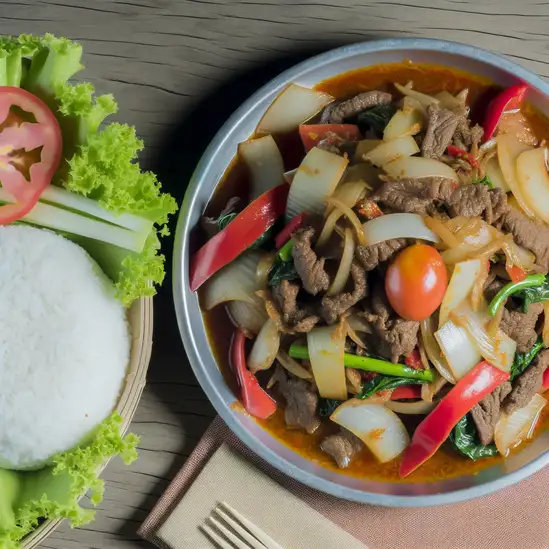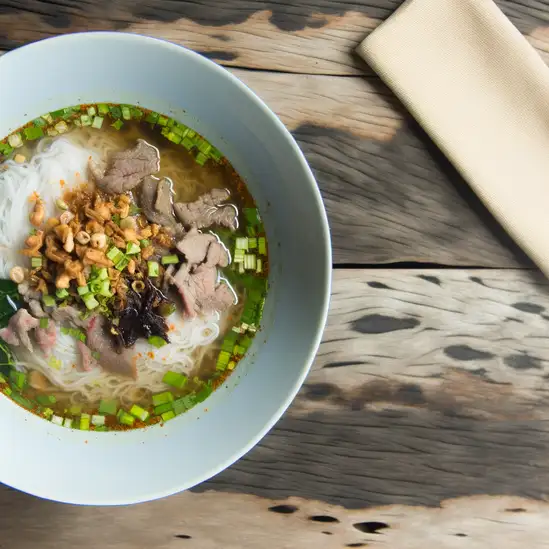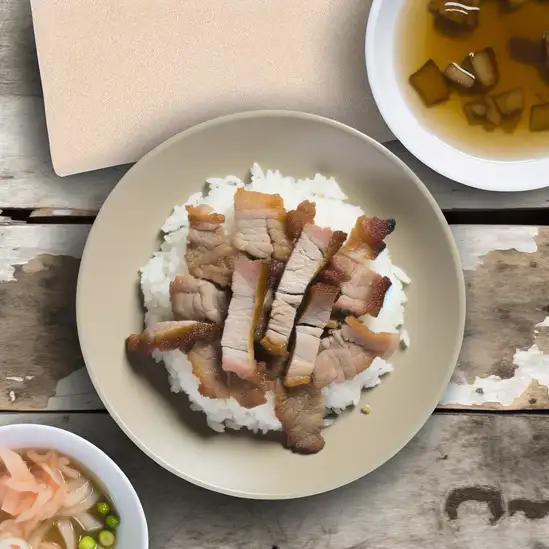



If you find yourself wandering through Cambodia,Khan Duŏn Pénh is a place that wraps you in its warm,bustling embrace the moment you arrive. It’s not just a city; it’s a living mosaic of vibrant street life,where the hum of motorbikes blends with the chatter of vendors and the occasional call of a street-side noodle seller. The air carries a mix of fragrant spices,sizzling street food,and the earthy scent of the nearby river,creating an intoxicating atmosphere that feels both alive and inviting. Walking through Khan Duŏn Pénh,you’ll notice the colorful markets bursting with fresh produce,exotic fruits,and handmade crafts. The city pulses with a unique energy—ancient temples stand quietly alongside modern cafes,and locals move with a rhythm that’s both purposeful and relaxed. It’s a place where you can sip on a strong,sweet Cambodian coffee while watching tuk-tuks zip by,or lose yourself in the intricate carvings of a centuries-old pagoda. What really makes Khan Duŏn Pénh special is its blend of tradition and everyday life. Here,culture isn’t confined to museums; it’s in the smiles of street vendors,the laughter spilling from family-run eateries,and the vibrant festivals that light up the streets. Visiting feels like stepping into a story that’s still being written—one where every corner offers a new taste,sound,or sight to savor. Trust me,this city will surprise you in the best ways and leave you wanting to come back for more.
The information on this page is currently being reviewed by Tripkliq and should be used as a guide only
Eng word: Hello
Eng pronunciation: suo sdei
Local language: សួស្តី
Eng word: Goodbye
Eng pronunciation: lea howie
Local language: លាហើយ
Eng word: Thank you
Eng pronunciation: aw kohn
Local language: អរគុណ
Eng word: How much
Eng pronunciation: bon man
Local language: ប៉ុន្មាន
Eng word: Toilet
Eng pronunciation: bong kohn
Local language: បង្គន់
Eng word: Help me
Eng pronunciation: chouy khnhom
Local language: ជួយខ្ញុំ
Eng word: Yes
Eng pronunciation: baat (for males) / chaa (for females)
Local language: បាទ/ចាស
Eng word: No
Eng pronunciation: te
Local language: ទេ
Eng word: Excuse me
Eng pronunciation: som toh
Local language: សូមទោស
Phnom Penh, the capital city of Cambodia, was founded in 1372 by Lady Penh, a wealthy widow who discovered four Buddha statues in a tree floating down the Tonle Sap River. She built a small shrine on a hill to house the statues, which eventually became Wat Phnom, the city's namesake.
Wat Phnom is the tallest religious structure in Phnom Penh and a significant historical site. Built in 1372, it stands on an artificial hill and is a symbol of the city's foundation. The temple is a popular spot for both locals and tourists to pray for good luck and success.
The Royal Palace in Phnom Penh, constructed in 1866, serves as the residence of the King of Cambodia. The palace complex includes the Silver Pagoda, which houses many national treasures, including gold and jeweled Buddha statues.
The Independence Monument, built in 1958, commemorates Cambodia's independence from French colonial rule in 1953. The monument is located in the heart of Phnom Penh and is a popular site for national celebrations and events.
Opened in 1920, the National Museum of Cambodia in Phnom Penh houses the world's largest collection of Khmer art, including sculptures, ceramics, and ethnographic objects. The museum offers a deep insight into Cambodia's rich cultural heritage.
Phsar Thmei, or Central Market, is an iconic landmark in Phnom Penh. Built in 1937 in Art Deco style, it is one of the largest markets in Cambodia, offering a wide range of goods from jewelry to fresh produce.
Originally a high school, Tuol Sleng was converted into a prison during the Khmer Rouge regime. Today, it serves as a museum to educate visitors about the tragic history of Cambodia and to honor the victims.
Designed by the renowned Cambodian architect Vann Molyvann, the Chaktomuk Conference Hall is a unique fan-shaped building completed in 1961. It is used for various cultural and official events and is a testament to Cambodia's architectural innovation.
Sisowath Quay is a bustling riverside promenade along the Tonle Sap River. It is a popular spot for both locals and tourists to enjoy a leisurely walk, dine at riverside restaurants, and experience the vibrant nightlife of Phnom Penh.
In Khan Duŏn Pénh, the most common Power Adaptor is Type A, Type C, Type G.







Stir-fried beef served with a tangy dipping sauce, often accompanied by rice and a side of fresh vegetables.

A popular noodle soup made with rice noodles, herbs, and a choice of meat, typically served with lime and chili.

Grilled pork served over rice, often accompanied by pickled vegetables and a side of broth, popular for breakfast.

A traditional Cambodian curry made with fish, coconut milk, and a blend of spices, often served in a banana leaf.

A traditional Cambodian breakfast dish consisting of rice noodles topped with a fish gravy and fresh herbs and vegetables.

A rich and flavorful dip made from fermented fish (prahok), coconut milk, and minced pork, usually served with fresh vegetables.

A stir-fried dish made with a fragrant Cambodian spice paste (kroeung), typically featuring chicken or beef and vegetables.
Bangkok is one of those cities that grabs you the moment you step out into its bustling streets. There’s this electric energy in the air—a mix of honking tuk-tuks,sizzling street food stalls,and the chatter of locals weaving through markets. The city feels alive,like it’s constantly moving and breathing,yet somehow it balances this chaos with moments of serene beauty,like the golden spires of temples catching the afternoon sun or quiet canals reflecting the sky.
Walking through Bangkok,you’ll be hit by a whirlwind of scents:fragrant jasmine from flower vendors,the sharp tang of lemongrass and chili from street carts,and the sweet aroma of mango sticky rice tempting you at every corner. The colors are just as vivid—neon signs flicker alongside traditional wooden shophouses,and monks in saffron robes glide past modern skyscrapers. It’s a city where old and new dance together effortlessly.
What really makes Bangkok special is its warmth and openness. The people here have a genuine kindness that shines through,whether you’re bargaining at Chatuchak Market or sharing a laugh over a bowl of spicy boat noodles. The culture is rich and layered,from the intricate rituals at Wat Pho to the lively festivals that light up the streets. Visiting Bangkok feels like stepping into a story that’s still unfolding,full of surprises and moments that stay with you long after you leave.
Ho Chi Minh City pulses with an energy that’s impossible to ignore—like the city itself is alive,breathing through its bustling streets and vibrant markets. The moment you step out,you’re greeted by a symphony of honking scooters weaving through the maze of narrow alleys,the sizzling sound of street food grilling on every corner,and the rich aroma of fresh herbs mingling with strong Vietnamese coffee. It’s chaotic but in the best way,a place where tradition and modernity collide in colorful,unexpected ways.
Walking through District 1,you’ll catch glimpses of French colonial architecture standing proudly beside sleek skyscrapers,while locals sip iced cà phê sữa đá at tiny plastic stools,chatting animatedly. The city’s character is raw and real—no polished tourist traps here,just genuine moments and warm smiles. At night,the streets transform as neon signs flicker on,and the scent of grilled seafood and sweet bánh mì fills the air,inviting you to taste the city’s soul.
What makes Ho Chi Minh City truly unforgettable is its resilience and spirit. It’s a place where history whispers from the War Remnants Museum and the Cu Chi Tunnels,yet life moves forward with a youthful,entrepreneurial buzz. Whether you’re savoring a bowl of pho at dawn or exploring vibrant art galleries and rooftop bars,the city wraps you in its embrace,making you feel like you’re part of its ongoing story.
Imagine stepping into a place where the air hums with the gentle rhythm of waves lapping against sun-warmed shores,and the scent of salty sea mingles with fragrant street food stalls. That’s Phuket for you—a vibrant island that feels alive in every sense. It’s not just the stunning beaches that grab you,but the way the island pulses with a laid-back energy,where colorful markets buzz with chatter and the aroma of grilled seafood fills the air. Walking through the old town,you’ll find charming Sino-Portuguese buildings painted in pastel hues,their shutters creaking softly in the tropical breeze,while tuk-tuks zip by,adding a playful soundtrack to your explorations.
Phuket’s character is a beautiful blend of tradition and liveliness. Temples with golden spires peek out from lush greenery,inviting quiet moments of reflection,while nearby,night markets burst with life—vendors calling out,sizzling woks,and the sweet tang of mango sticky rice tempting your taste buds. The island’s culture is warm and welcoming,with locals who smile easily and share stories over cups of strong Thai coffee or fresh coconut water.
What makes Phuket truly special is how it wraps you in its embrace—whether you’re watching a fiery sunset from a cliffside bar,diving into crystal-clear waters teeming with vibrant marine life,or simply savoring the spicy kick of a freshly made curry. It’s a place that invites you to slow down,soak in the colors,sounds,and flavors,and leave with a heart full of unforgettable moments.
If you’re heading to Cambodia and craving a coastal escape with a laid-back yet lively spirit,Sihanoukville is where you want to land. The moment you step off the bus or boat,there’s this warm,salty breeze that wraps around you,carrying the faint scent of grilled seafood and tropical flowers. The city hums with a mix of chatter from local markets,the distant crash of waves,and the occasional call of street vendors selling fresh fruit or cooling coconut water. It’s a place where the pace slows down just enough to let you breathe in the island vibe without ever feeling bored.
What’s really special about Sihanoukville is how it blends raw natural beauty with a colorful,evolving culture. You’ll find stretches of golden sand fringed by palm trees,where fishermen mend their nets and kids splash in the shallows. At night,the town lights up with a mix of cozy beach bars and lively night markets,where you can savor spicy Khmer dishes or sip on a cold Angkor beer while chatting with travelers and locals alike. The city’s character feels genuine—unpolished but welcoming,with a spirit that invites you to slow down and soak it all in.
Whether you’re wandering through the bustling Phsar Leu market,hopping on a boat to nearby islands,or just lounging on the beach watching the sun dip below the horizon,Sihanoukville leaves you with a sense of calm adventure. It’s a place that feels like a warm hug from Cambodia’s coast,full of stories waiting to be discovered.
Imagine stepping into a place where the ocean breeze carries the scent of salt and sizzling street food,and the rhythm of life feels both relaxed and vibrant—that’s Da Nang. This city pulses with an easygoing energy,where modern skyscrapers stand alongside ancient temples,and the laughter of locals blends with the gentle crash of waves. Walking along the Han River at dusk,you’ll catch the golden glow of the Dragon Bridge lighting up the night,its fiery breath a spectacle that feels almost magical.
Da Nang’s streets are alive with the aroma of fresh seafood grilling on open flames,mingling with the sweet fragrance of tropical fruits from bustling markets. The city’s character shines through its people—warm,welcoming,and proud of their rich heritage. You can hear the chatter of vendors,the clinking of glasses in cozy cafes,and the distant hum of motorbikes weaving through traffic,all creating a soundtrack that’s uniquely Da Nang.
What really sets this city apart is its blend of natural beauty and cultural depth. Just a short ride away,you can explore the Marble Mountains,where limestone caves and pagodas invite quiet reflection,or relax on My Khe Beach,feeling the soft sand between your toes. And when night falls,the city transforms with lively night markets and riverside bars,where you can savor local dishes like mi quang or fresh spring rolls,each bite bursting with flavor and history. Da Nang isn’t just a place to visit—it’s a place to feel alive.
Bali feels like stepping into a vibrant dream where every corner pulses with life and warmth. From the moment you arrive,there’s this unmistakable energy—part spiritual,part playful—that wraps around you like a soft,tropical breeze. Imagine waking up to the gentle rustle of palm leaves and the distant sound of waves crashing against volcanic black sand beaches. The air carries a mix of frangipani blossoms and salty sea spray,instantly grounding you in the island’s natural beauty.
What really makes Bali special is its rich culture woven into everyday life. You’ll see locals in colorful sarongs offering flowers at temple steps,hear the rhythmic beat of gamelan music drifting through the air,and catch glimpses of intricate wood carvings and vibrant paintings in small artisan shops. The island’s spirituality isn’t just something you observe—it’s something you feel,a quiet presence that invites you to slow down and connect.
And then there’s the food—oh,the food! Freshly grilled satay,fragrant nasi campur bursting with spices,and tropical fruits so sweet they almost taste like candy. Whether you’re dining in a bustling market or a cliffside café overlooking the ocean,every bite feels like a celebration of Bali’s rich flavors and traditions. Honestly,Bali isn’t just a place you visit; it’s a place that stays with you,long after you’ve left.
Tourists are sold fake tickets for attractions or events, leaving them unable to enter.
Some money changers may give incorrect exchange rates or use sleight of hand to shortchange tourists.
Scammers approach tourists with sob stories to solicit donations for non-existent charities.
Tourists are lured into visiting fake orphanages where children are exploited to solicit donations.
Unlicensed guides offer their services and provide inaccurate information or lead tourists to overpriced shops.
Tourists are persuaded to buy 'valuable' gems at inflated prices, which turn out to be worthless or fake.
Some spas overcharge tourists or add hidden fees after services are rendered.
Rental companies may claim damages to the bike upon return and demand excessive repair fees.
Some restaurants or street vendors charge tourists significantly higher prices than locals.
Thieves target tourists in crowded areas or on motorbikes to steal bags, phones, or wallets.
Children or women with babies are used to solicit money, often controlled by organized groups.
Scammers pose as monks or temple representatives to solicit donations for fake causes.
Tuk-tuk drivers may quote inflated prices or take longer routes to overcharge tourists.
Cambodia has strict laws against the possession, use, and trafficking of illegal drugs. Penalties can be severe, including long prison sentences and heavy fines. Tourists should avoid any involvement with illegal drugs to avoid legal trouble.
In Khan Duŏn Pénh, Cambodia, smoking is generally allowed in public places, but there are restrictions in certain areas such as hospitals, schools, and government buildings. Restaurants and bars may have designated smoking areas. It is advisable to look for 'No Smoking' signs and respect local regulations.
Vaping is not explicitly regulated in Cambodia, but it is generally treated similarly to smoking. Tourists should be cautious and avoid vaping in non-smoking areas or where it might be considered inappropriate. Always check for local signs and guidelines.
What are other people saying about Khan Duŏn Pénh?
Recent Social posts about Khan Duŏn Pénh
There is nothing to show you for now.